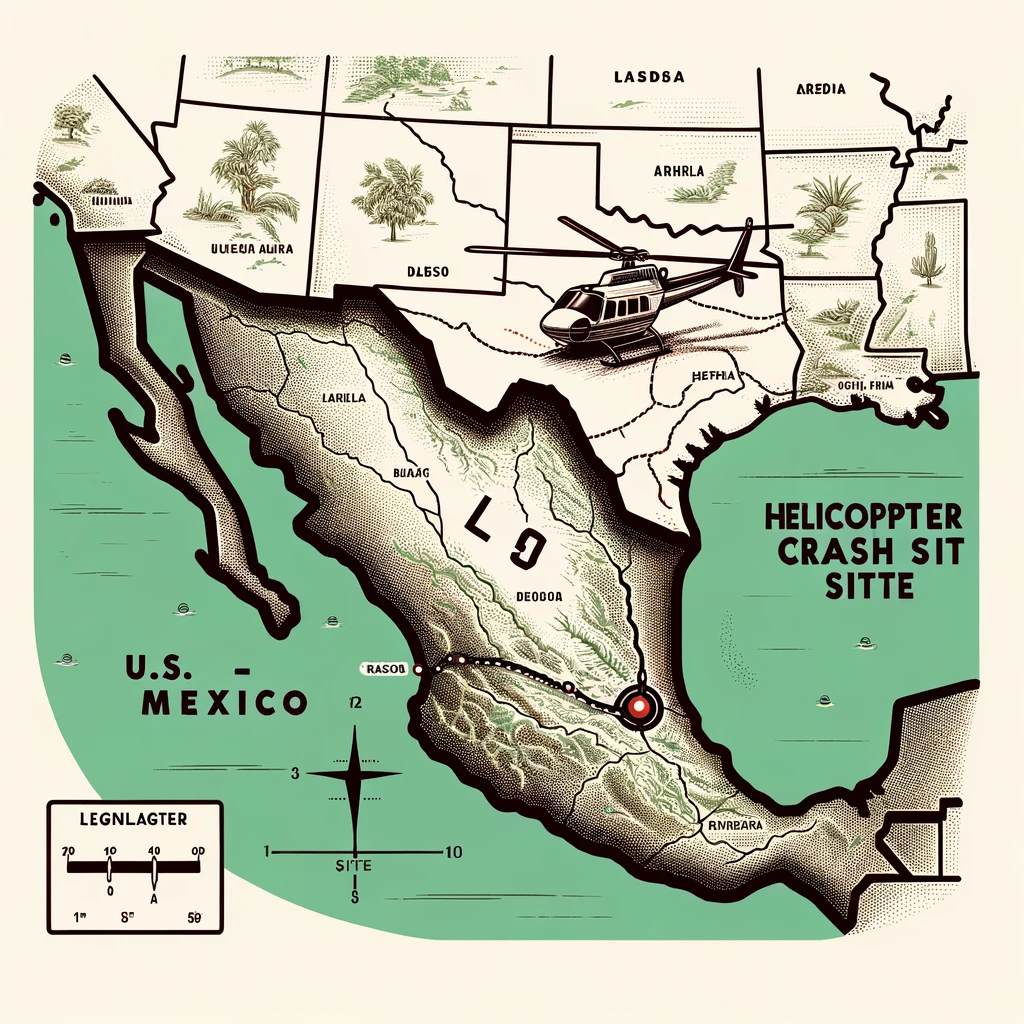
In a harrowing event that has gripped the nation, a helicopter carrying a Border Patrol agent alongside three National Guard members met with a catastrophic crash along the U.S.-Mexico border. This tragic accident resulted in the loss of three precious lives, casting a somber shadow over the border security operations and raising pertinent questions regarding aviation safety and operational protocols.
Details emerging from the incident outline a grim scene. The helicopter, engaged in a routine surveillance mission, encountered unforeseen difficulties, leading to a fatal crash. The aircraft was carrying seasoned personnel, including a Border Patrol agent and three members of the National Guard, who were part of a coordinated effort to ensure the security and safety of the border region.
The crash claimed the lives of three individuals onboard, leaving one survivor, who is currently receiving medical attention. The identities of the deceased and the survivor have been withheld pending notification of their families. The response to the crash was swift, with emergency services and border security personnel quickly mobilizing to secure the site and initiate investigative procedures.
An investigation into the crash has been launched to ascertain the cause and to implement measures to prevent such incidents in the future. Initial reports suggest that mechanical failure or adverse weather conditions may have played a role, but authorities are awaiting conclusive evidence before drawing any final conclusions. This incident has brought aviation safety measures and the risks faced by border security personnel into sharp focus, prompting a reevaluation of current protocols and equipment.

The crash has significant implications for border security operations, as it highlights the risks and challenges faced by those safeguarding the nation’s borders. The loss of lives is a solemn reminder of the sacrifices made by security personnel, emphasizing the need for robust support and safety measures for these individuals as they carry out their critical duties.
The incident has resonated deeply within the communities along the border and across the nation, sparking an outpouring of sympathy and support for the families of the victims. It serves as a poignant reminder of the inherent dangers of security operations and the human element underlying the often-politicized discourse on border security.
As the investigation progresses, there is a collective call for thorough scrutiny and possible reform in the operational and safety protocols governing aerial missions along the border. The objective is clear: to ensure that such a tragedy does not recur, safeguarding the lives of those who serve on the front lines of national security.
The helicopter crash at the U.S.-Mexico border is a tragic reminder of the risks undertaken by border security personnel and the critical need for stringent safety protocols. As the community mourns, the nation reflects on the dedication of these individuals and the importance of ensuring their safety in their mission to protect the border. This incident will undoubtedly serve as a catalyst for discussions on enhancing safety measures and supporting those who serve with unwavering commitment to their duties.